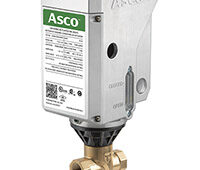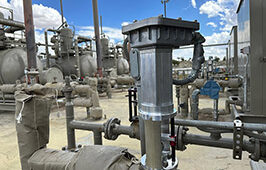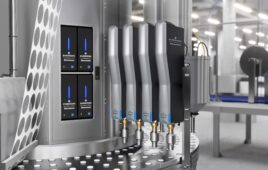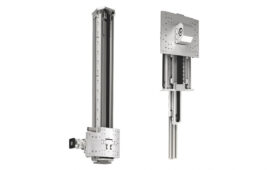How do you stop your car as you approach a red light? Is it a gentle release of the gas pedal so it can coast, slamming on the brakes or somewhere in between?
With both methods, each way of stopping has a practical purpose. Most people like to glide to a stop. It’s easier on the passengers and it saves on gas and brake pads. However, sometimes you have to stop the car as soon as possible. The same is true with machines. For engineers there are other practical considerations when designing an emergency stop system than the obvious primary function.
A normal stop allows the machine to glide to a smooth stop at the end of a sequence. In most cases, this will be done by a signal sent to the machine to let it know it should finish its task. The signal can be sent by the operator, usually with a black pushbutton.
For times when an operator needs to deliberately stop the machine as quick and safe as possible, an emergency stop is used. This type of stop is performed using a red mushroom shaped device with a yellow background.
Machines require at least one category 0 emergency stop, which is the immediate removal of power. On occasion though, the removal of power creates more hazards, so category 1 emergency stops may be suitable for additional emergency stop buttons. This is a controlled stop before the power is removed.

Viewing the Omron Delta Robot as it uses different stopping methods between emergency stop and protective stop (light curtain).
Careful consideration should be applied before using a category 2 emergency stop, a controlled stop with the power still available. Because it’s quite possible that the operator may not be aware of the hazard, a protective (safety) stop uses a control system to stop a machine if anything accesses a hazardous area. There are many types of this technology including light curtains, non-contact switches, safety mats, bumpers and edges, area scanners and mechanical switches.
Every machine needs to have an emergency stop. However, the machine does not need to have immediate stops with protective devices. The only way they can stop differently is if the controls are separated.
Depending on the load, motor size and speed, the number of braking stops could be greatly reduced before the disk in the mechanical brake is worn out.
It is difficult to separate the stopping method with relays because they are hard-wired and share the outputs. However, with a programmable safety rated controller, the logic can be separated so a signal can be sent to the machine during the activation of a protective stop device. This signal separation gives the machine a chance to stop on its own before the safety system “slams on the brakes.”
Like the need for emergency stops themselves, some design considerations are necessary but easily overlooked. When adding any type of delay, remember to include the additional time to the safe distance calculation. When using a time delay, the length of time for the motion to stop may be dependent on the machine age, condition of contacts, speed, load, and motor size. Using the dynamic braking settings may also affect the machine’s stopping time. If no more space exists to extend the safety zone, a common solution is to use a guard interlocking switch.
One advantage of considering a servo drive or inverter is the safe torque-off function. It has a faster response time than using the traditional force guided relays for the EDM (External Device Monitoring) since it has one less connection.
For small systems, turning off the power through a breaker box may be a suitable substation for an emergency stop pushbutton. The breaker box must be located by the machine and easy to activate. According to the ANSI RIA 15.06-2012, section 5.6.4, stop control device(s) shall be placed near each start control device.
It is important to reference the specific emergency stop requirements in your area. In the U.S., the primary emergency stop requirements are found in the NFPA 79: 2015 Edition (Electrical Standard for Industrial Machinery). The Canadian standards refer to NFPA 79:2015. ISO 13850:2006 (Safety of Machinery—emergency stop function—Principles for design) covers international standards.
Specific requirements just for emergency stops include:
- be continuously operable and readily accessible
- red with yellow background
- positioned so readily available and capable of non-hazardous actuation by the operator and others who may need to actuate it
- positive mechanical action, direct opening (NC contacts)
- (be either) stop category 0 stopping by means of immediate removal of power to the machine actuator(s) OR Mechanical disconnection (declutching) between the hazardous elements and their machine actuator(s), and if necessary, braking
The robotics standard, ANSI RIA 15.06-2012, section 5.3.8 states the system shall:
- have a protective stop and independent emergency stop
- lead to a protective stop when entering the safeguarded space in automatic mode
- have manually initiated emergency stop function.
Omron
www.omron.com
Filed Under: Actuators, Brakes • clutches





Tell Us What You Think!